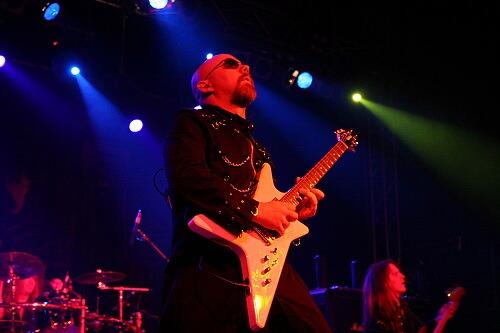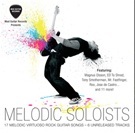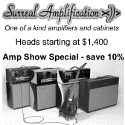How To Practice For Maximum Guitar Speed – Part 3

When trying to increase your guitar speed, the most important thing to remember is that you must be able to use your faster speed in songs (otherwise, what is the point of learning how to increase your speed in the first place?). Few things about guitar playing are more frustrating for people than having worked so hard to acquire good technique and speed on the guitar but then not being able to use it in real life playing situations, yet most players struggle with this to some extent.
During your practice sessions (even when practicing strictly to increase your speed) think about (and practice for) ‘real life’ guitar speed challenges. Here are three very common ‘real life’ playing situations that many players typically struggle with when applying their speed to ‘real music’:
1. Moving from rhythm guitar playing directly into a fast / challenging lead guitar solo or lick.
2. Immediately playing a high speed lead guitar part after playing nothing before.
3. Playing fast licks consecutively that require you to use drastically different guitar techniques, positions on the neck, or hand positions.
There are both easy and more advanced (though also more effective) solutions to the problems listed above. Here are 7 of the easy solutions that you can use right away to increase your ‘useable’ guitar speeds. Because of the fact that most causes of the problems guitar players have are actually mental (not physical), some of the solutions may seem to have nothing to do with ‘playing guitar’, but in fact they are extremely effective in many cases.
1. One way to overcome problems when a sudden burst of speed is needed (like when you go directly from a rhythm part to a fast lead guitar lick) is to ‘breathe out’ (exhale) just before (and during) playing the first fast or hard speed lick.
2. Guitar players who eventually develop a lot of physical speed in their hands often find their next challenge is to overcome slow ‘mental processing’. This means that the hands actually outrun the mind’s ability to analyze what is going on ‘in real time’. 2 hand synchronization problems, rhythmic timing errors of the lead guitar solo against the rhythm of the song, inconsistent articulation, excess string noise, the inability to smoothly shift positions on the neck are just a few of the common problems that occur when mental processing breaks down as the hands are playing at high speeds.
When teaching my virtuoso level students, I often spend a great deal of time helping them to avoid this problem before it occurs. The place to start is to find exactly where your mental awareness is at various speeds. This is much easier to do with an experienced teacher, but you can try this on your own.
Play something at about 1/2 of your top lead guitar playing speed, notice how consciously ‘aware’ you are of all the issues mentioned above as you play. Of course when you test yourself, the results won’t be truly accurate because you are focusing on doing this little test and not playing in the way you normally do, that is why having a guitar teacher to test you and gauge your processing is much better to get real results from the testing. If you notice any issues with your mind’s ability to ‘analyze’ the details of your playing, then write down what the issue was AND the speed you played at (use a metronome for this).
If you aren’t sure if your mental analysis is accurate, record yourself and then listen back to your recording. When you listen back to the recording, do you now hear things that you didn’t hear before, when you were playing? If yes, you have identified a mental processing issue that needs to be fixed. If no, then increase the speed on the metronome gradually until you do find a mental processing problem.
Once you discover a mental processing problem, you need to slow down the speed on the metronome and spend some time practicing at speeds where you can fully hear (and think about) what is really going on in your guitar playing. The goal is to shorten the time it takes for your brain to analyze what is going on and then make the necessary adjustments in your physical guitar playing ‘in real time’ (at full speed). As you play, focus on the problem you have identified and try to make the adjustments needed to fix it while playing (without stopping).
3. One simple solution to solve the problem with shifting positions on the fingerboard at high speeds is to simply fix your eyes on where the first note of the new position will be. So for example, if you are playing a phrase near the 5th fret and your next phrase will begin on the 14th fret, once the first phrase has begun, you probably don’t need to watch ‘every note’ of that phrase with your eyes (unless you are a beginner), so fix your eyes on the 14th fret and stare at it until you get there. Simple solution, but very effective for most issues dealing with simple position shifts.
4. To overcome the very common problem of switching from rhythm guitar playing to fast lead guitar playing, we need to look at two possible causes for the problem. In this case it could be a physical problem because all the rhythm playing may not be enough for your hands to be warmed up (and to keep them warm) for the coming solo. Make sure you are warmed up before playing the song. If you are performing live keep your fingers warm by doing warm up exercises in between songs (if there is time). You can also use heat. I have sometimes used a personal heater that is set up on the side of the stage, in between songs it is sometimes possible to quickly warm up your fingers.
The second possible cause to the rhythm/lead guitar switching problem is a mental one. There is not enough space in an article to go into great detail about exactly why this happens in guitar players’ minds, so let’s just get to one of the possible solutions. Simply dedicate some daily practice time (maybe 10-15 minutes) to switching back and forth between lead and rhythm. In a 10-minute period you can make this change back and forth at least 500 times.
5. Just like the problem players have with switching back and forth between rhythm and lead guitar playing, another challenge is playing a high speed guitar solo when you haven’t played any notes just before that. This can be quite challenging for all the reasons mentioned in the point above plus, because there is no momentum in either hand just before the solo, it can be even harder to go perfectly into a very fast lead guitar part.
To get started to solve this problem, spend some practice time going back and forth between playing ‘nothing’ and playing your first high speed guitar lick. It’s one thing to practice the same lick over and over again, but that doesn’t help you to ‘use’ the speed you have developed if you need to play that same fast lick when there is nothing played before it in an actual song.
6. If you’ve ever practiced a technique or lick at high speeds over and over again with good results, but struggle to play it within the context of the entire solo, the problem is likely that you may not have been practicing a wide variety of techniques in random order. Try practicing a bunch of different techniques in a random order so you get used to combining different types of guitar techniques at high speed. To learn more about this, download this free 110 page Guitar Practice eBook.
7. Another cool solution to many of the problems discussed above is to begin your first fast lick with a little bit of legato. If you’re an Yngwie Malmsteen fan, you hear this used all the time in these playing situations. Not only does it help to solve these challenges, but it also sounds cool (obviously Yngwie wouldn’t use this if he didn’t like the sound). When you hear him play a really fast descending scale for example (especially when he plays rhythm guitar just before the fast lick) notice that he usually picks only the first note of the first string. He uses pulloffs for the remaining notes of that string and then his 2 hands synchronize together to play the rest of scale as he picks all the remaining notes (the final note being a common exception).
To get more guidance on how to practice to build your guitar speed, download this free guitar practice ebook.
About the author: Tom Hess is a professional guitarist and teaches electric guitar lessons online.
© Tom Hess Music Corporation. All Rights reserved.










